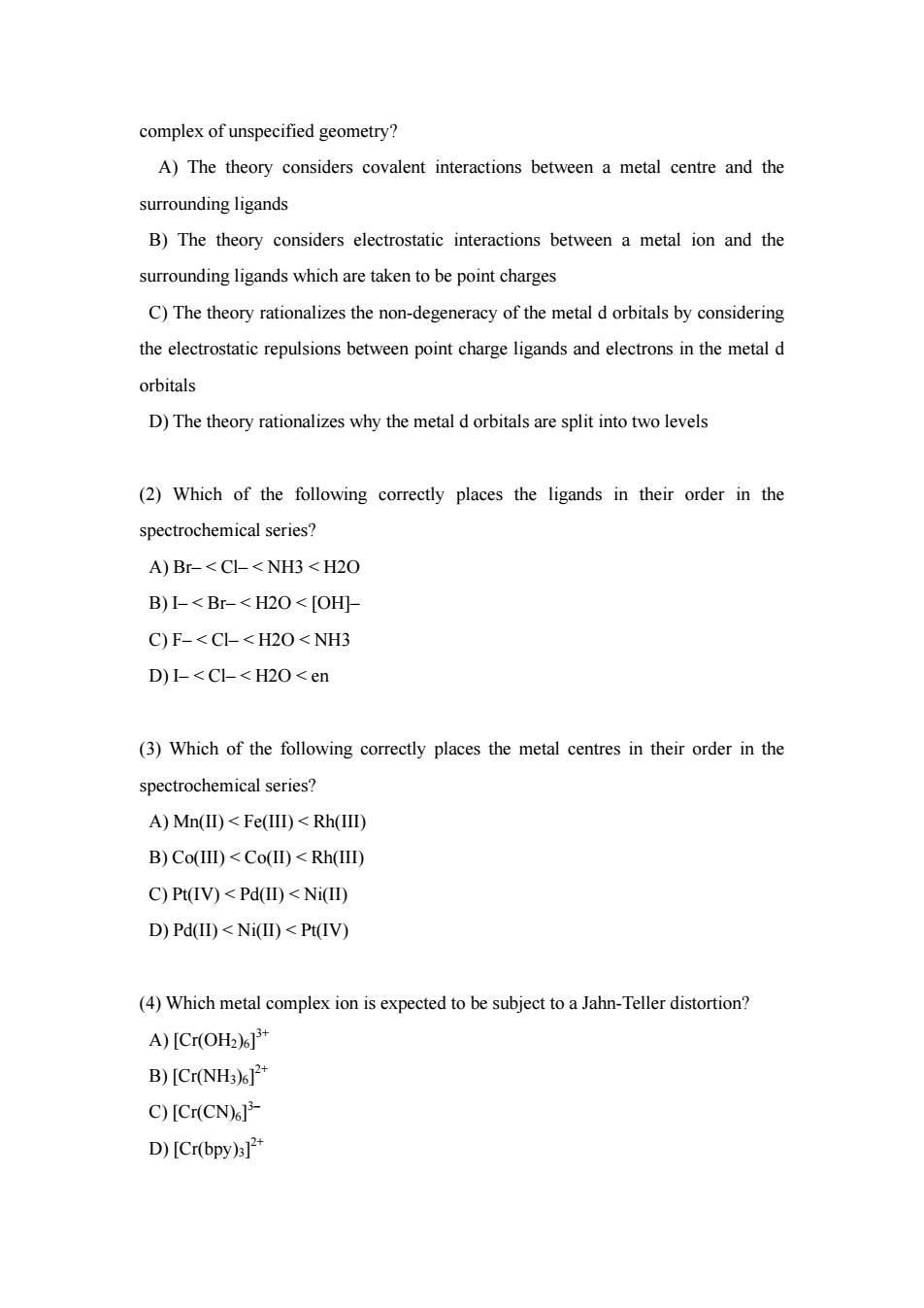正在加载图片...

complex of unspecified geometry? A)The theory considers covalent interactions between a metal centre and the surrounding ligands B)The theory considers electrostatic interactions between a metal ion and the surrounding ligands which are taken to be point charges C)The theory rationalizes the non-degeneracy of the metal d orbitals by considering the electrostatic repulsions between point charge ligands and electrons in the metal d orbitals D)The theory rationalizes why the metal d orbitals are split into two levels (2)Which of the following correctly places the ligands in their order in the spectrochemical series? A)Br-<CI-<NH3 <H20 B)I-<Br-<H20<[OH] C)F-<Cl-<H20<NH3 D)-<C-<H20<en (3)Which of the following correctly places the metal centres in their order in the spectrochemical series? A)Mn(II)<Fe(III)<Rh(III) B)Co(III)<Co(ID)<Rh(IID) C)Pt(IV)<Pd(ID)<Ni(II) D)PdW)<Ni⑩<PtIV) (4)Which metal complex ion is expected to be subject to a Jahn-Teller distortion? A)[Cr(OH2)] B)[Cr(NH3)6 C)[Cr(CN)] D)[Cr(bpy)s complex of unspecified geometry? A) The theory considers covalent interactions between a metal centre and the surrounding ligands B) The theory considers electrostatic interactions between a metal ion and the surrounding ligands which are taken to be point charges C) The theory rationalizes the non-degeneracy of the metal d orbitals by considering the electrostatic repulsions between point charge ligands and electrons in the metal d orbitals D) The theory rationalizes why the metal d orbitals are split into two levels (2) Which of the following correctly places the ligands in their order in the spectrochemical series? A) Br– < Cl– < NH3 < H2O B) I– < Br– < H2O < [OH]– C) F– < Cl– < H2O < NH3 D) I– < Cl– < H2O < en (3) Which of the following correctly places the metal centres in their order in the spectrochemical series? A) Mn(II) < Fe(III) < Rh(III) B) Co(III) < Co(II) < Rh(III) C) Pt(IV) < Pd(II) < Ni(II) D) Pd(II) < Ni(II) < Pt(IV) (4) Which metal complex ion is expected to be subject to a Jahn-Teller distortion? A) [Cr(OH2)6] 3+ B) [Cr(NH3)6] 2+ C) [Cr(CN)6] 3– D) [Cr(bpy)3] 2+ 2